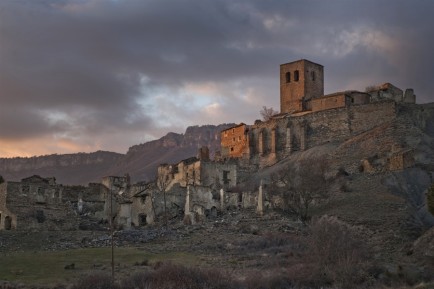
Across many parts of inland Spain, former villages abandoned years ago are turning the heads of British buyers.
The relationship between Spain’s wild and rural hinterlands and British expats is a curious one. On the fringes of the country’s vast interior sits a fair smattering of new urbanisations that provide seclusion and solitude for sun-seeking Brits, but with easy access to the hustle and bustle of larger towns and cities, usually by the coast…
But head further inland and the frequency at which a London or Mancunian accent rings out across the quiet plaza on a Saturday morning drops off dramatically. Brits do regularly populate pockets of interior Spain, but they are usually either the spouses of Spaniards or a curious array of tortured artists, inspiration-seeking writers or the type of eccentric character that Britain seems to do best.
This could all be changing, however, as Southern Europe accelerates its great march towards urbanisation. According to a new report by the European Commission, by 2020 up to three-quarters of all European will live in cities, rising to 78% by 2030. After the WWII that figure was just 50 per cent, and the direction of travel appears irreversible – mostly.
Across the more rural parts of Italy, Portugal, Greece and Spain, whole villages are at risk of abandon, the European Commission has found, as youngsters weaned on the instant-gratification world of smartphones and live streaming turn their backs on traditional farming and agricultural vocations and take every opportunity to head to the brightest nearby lights.
And while former settlements have been reinvented by the arrival of hotel chains rebranding them as peaceful curiosities, many more have been left in ruin.
Enter the Brits.
According to the owner of Aldeas Abandonadas (and you don’t need to speak Spanish to understand that second word), Brits are by far the most frequent inquirers into purchasing whole abandoned settlements and villages in Spain.
While Americans go for vineyards and Germans ask after castles, it is the Brits who see the value in a “fixer-upper”, Elvira Fafian said.
With bargains galore, excellent weather and unmatched peace-and-quiet, many of these villages tick nearly all of the boxes a lot of British buyers in Spain say they are looking for. The fact that most properties are wrecks with no or few utilities appears to be less of a setback than one might imagine – something about the British psyche of making their home their castle spurs on a lot of these buyers, Fafian added.
The advice from another agent specialising in selling forgotten Spanish real estate is simple: “It’s essential to be apprised of local regulations,” said Mark Adkinson, who runs Galician Rustic, an agency that sells abandoned villages in Galicia in the north of Spain. “Spanish planning rules, for example, mean buyers are only able to refurbish properties in designated rustic areas, not to build new ones.”
Whether this smattering of intrepid Brits can effect a change in fortunes for pastoral life across Southern Europe remains doubtful, but if one or two villages can be brought back to life thanks to the blood, sweat and tears, effort, ingenuity and buckets of strong tea of these British buyers, then that’s a job well done.
 en
en



 Vlaams-Nederlands
Vlaams-Nederlands
0 Comments
Leave a Comment
DISCLAIMER
The opinions and comments expressed by contributors to this Blog are theirs alone and do not necessarily reflect the views of VIVA Homes Under the Sun Ltd, any of its associated companies, or employees; nor is VIVA to be held responsible or accountable for the accuracy of any of the information supplied.
Have you got something to say?